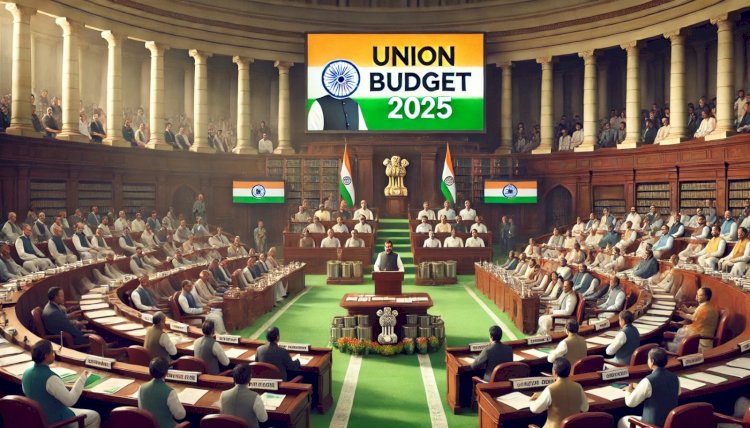Union Budget 2025: Key Highlights and Impact on India's Growth!
The Union Budget 2025 focuses on tax relief, innovation, agriculture, and manufacturing to drive economic growth. It introduces higher tax rebates and revised slabs for middle-class relief, new schemes for farmers, and increased rural infrastructure development. ₹20,000 crore has been allocated for AI, biotech, and quantum tech, while incentives for EVs, electronics, and local production boost manufacturing. Additionally, ₹20,000 crore is set aside for Small Modular Reactors under the Nuclear Energy Mission. This budget aims to strengthen industries, create jobs, and ensure sustainable growth.

On February 1, 2025, Finance Minister Nirmala Sitharaman presented the Union Budget 2025, outlining the government's vision for India's economic growth. With a strong emphasis on tax reforms, innovation, agriculture, and manufacturing, this budget aims to boost the economy while providing significant relief to individuals and businesses.

Let’s explore the major announcements and their impact across various sectors.
1. Tax Reforms: Relief for the Middle Class
One of the biggest takeaways from Budget 2025 is the income tax relief provided to salaried individuals.
Complete tax rebate for individuals earning up to ₹12.75 lakh per annum.
Revised tax slabs to reduce the burden on higher-income groups.
Increase in the standard deduction from ₹50,000 to ₹75,000.
These tax benefits aim to put more money in the hands of individuals, boosting consumer spending and economic activity.
2. Boost for Agriculture and Rural Development
The budget introduces several schemes to support farmers and strengthen India’s agricultural sector:
Prime Minister Dhan-Dhaanya Krishi Yojana – A new initiative to enhance agricultural productivity and farmer welfare.
Six-year mission to increase pulses and cotton production, reducing dependency on imports.
Higher allocation for rural infrastructure, irrigation, and storage facilities.
This focus on agriculture is expected to increase rural incomes, promote self-sufficiency, and strengthen India's food security.
3. Investment in Research, Innovation, and Technology
To boost India’s standing as a leader in science and innovation, the government has allocated ₹20,000 crore for research and development.
Private sector-driven R&D initiative to drive technological advancements.
10,000 Prime Minister Research Fellowships for students at IITs and IISc to promote cutting-edge research.
Investment in AI, quantum computing, and biotechnology to make India a global innovation hub.
By investing in new-age technologies, India aims to increase job opportunities and support tech startups.
4. Strengthening Manufacturing and Exports
To promote Make in India, the budget includes several incentives for domestic manufacturing and exports:
Tax exemptions on components used in LED TVs, mobile phones, and electric vehicle batteries.
Lower duties on EV components to promote sustainable mobility.
Simplified trade policies to facilitate exports and attract global investments.
These measures are expected to boost industrial production, create employment opportunities, and strengthen India's position in global trade.
5. Nuclear Energy and Sustainability Initiatives
India has launched an ambitious Nuclear Energy Mission with a ₹20,000 crore allocation to develop Small Modular Reactors (SMRs).
Goal: Operationalize five indigenously developed SMRs by 2033.
Focus on clean energy and sustainability to reduce dependence on fossil fuels.
This investment in nuclear energy is a game-changer for India's energy sector, ensuring long-term energy security.
Conclusion: A Growth-Oriented Budget
The Union Budget 2025 is a well-balanced financial roadmap aimed at economic expansion, job creation, and financial relief. The emphasis on tax benefits, agriculture, research, manufacturing, and energy signals a strong commitment to sustainable and inclusive growth.
























